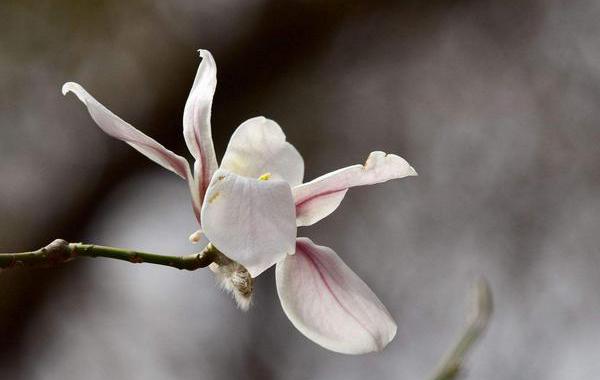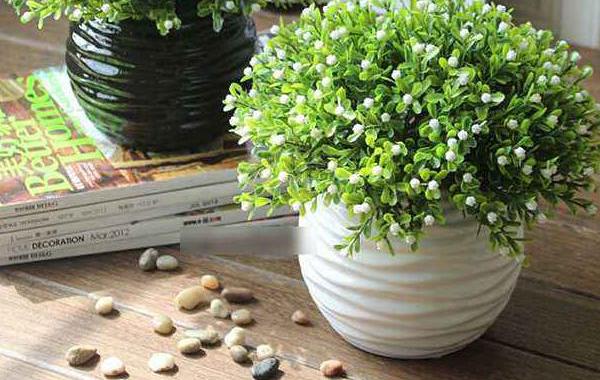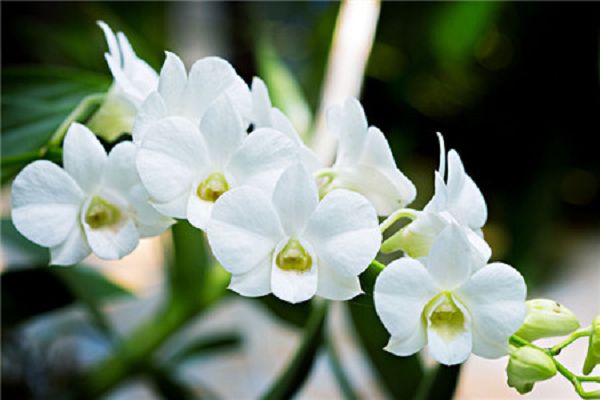How to raise magnolia, methods and matters needing attention in magnolia culture

Magnolia fresh and beautiful, gaudy, dignified and virtuous, looks very much like the lotus, but quite different from the lotus. When Magnolia is in full bloom, it is full of trees, first flowers and then leaves, graceful posture standing between the branches, adding spring light to the courtyard, magnolia blooming fragrance, refreshing, refreshing, so how to raise magnolia?
How to raise magnolia
Magnolia is light-loving, hardy and can survive the winter in the open field. Love high dryness, avoid low dampness, waterlogging is easy to rot roots. The sandy soil, which is fertile, well drained and slightly acidic, can also grow on weakly alkaline soil. In the south with higher temperatures, it can blossom from December to January of the following year.
Magnolia is a flowering tree species with early spring color and fragrance. When planting, it is necessary to grasp the right time, neither too early nor too late. It is most suitable to plant Magnolia 10 days before germination in early spring or before spreading leaves after flower fade.
When transplanting, regardless of the size of the seedlings, the roots should carry mud clumps, and be careful not to damage the roots as far as possible to ensure survival. Before planting, fully mature organic fertilizer should be applied in the hole as base fertilizer. After planting, seal the soil and press it, and pour enough water in time.
1. Fertilization
Magnolia prefers a sunny and humid environment and should not grow in alkaline soil for a long time. Planting should choose places with shelter from the wind and sun, good drainage and fertile places. There should be plenty of water and fertilizer before flowering to promote beautiful magnolia.
Its flowers are fragrant. Magnolia has few branches and generally does not need pruning except for withered branches, disease and insect branches and branches that disturb the tree shape. If there is no seed left after the flower fade, the fruit should be cut off so as not to consume nutrients. Magnolia has strong cold tolerance and can survive the winter in the open field in the south of North China and Northeast China.
Magnolia prefers fertilizer, but avoids big fertilizer; generally applying fertilizer twice during the growing period can be beneficial to flower bud differentiation and promote growth. Once in early spring, and again in May-June. Fertilizers are often made of fully mature organic manure. Newly planted seedlings do not need to be fertilized until after falling leaves or in the following spring. The root system of Magnolia is fleshy and can not tolerate stagnant water. It is advisable to keep the soil moist during the flowering and growing period. After entering the autumn, we should reduce watering, delay the rooting of magnolia, and promote the branches to mature in order to survive the winter. It is generally not watered in winter, but only once when the soil is too dry.
2. Pruning
Magnolia branch wound healing ability is poor, so generally do not prune. However, for the sake of reasonable tree shape, the overgrown branches, withered branches, disease and insect branches and branches that hinder the beauty of the tree shape should still be cut off at the initial stage of leaf expansion. In addition, after the flower fade, if there is no seed, the remnant flower and the ear of oyster should be cut off so as not to consume nutrients and affect the flowering in the coming year.
3. Potted plants
Magnolia is mostly planted in the ground, and it is appropriate to cultivate it into a pile when potted.
Potted magnolia, feasible banding treatment, that is, after germination in April, with the growth of new shoots, banding at any time, tied into a curved posture, limiting the height of the trunk. And because Magnolia is a deep root system, living in the basin for a long time, it is easy to grow weak, so the main root should be repaired, planted in the field, and then put on the pot before flowering, so that the flowers can be numerous and colorful.
Culture methods and matters needing attention of Magnolia
1. Picking leaves
Magnolia cultivated indoors can choose to go out for a period of time between the Spring Equinox and Qingming every year, mostly in cloudy or cloudy weather. 2-3 days after leaving the room is the time for Magnolia to adapt to the outdoor environment. Then remove the old leaves from the plant, leaving only a few young leaves on the shoots to promote the growth of new shoots. Since then, every time the flowers fall, a small number of old leaves need to be removed to save nutrients for the growth of new branches and flower bud germination. During the growing period of magnolia, necessary and moderate coring work can also control the balanced distribution of nutrients and promote the growth of lateral branches.
2. Nutrients
Magnolia needs more nutrients for its growth because of its long flowering period, large flower shape and large number of flowers. Appropriate fertilization is needed to provide sufficient nutrients for its growth, so as to ensure that Magnolia can blossom luxuriantly and beautifully when the normal flowering time comes. When potting, you should apply enough base fertilizer, and fertilize organic liquid fertilizer (rotten cake fertilizer and water) every 5-7 days during the flowering period from May to July. To adhere to the principle of frequent application of thin fertilizer, fertilizer can be prepared first light and then thick, do not apply raw fertilizer, so as to avoid root burning. In addition, extra-root fertilization should be taken every 7-10 days, and 0.5% concentration of plant oxytocin and 0.3% concentration of potassium dihydrogen phosphate can be sprayed.
3. Watering
The root of Magnolia belongs to fleshy root, and the amount of water should be controlled in place. Therefore, watering should be carried out every day from early summer to late autumn to keep the soil moderately moist, especially in dry dog days, and the air humidity should be improved by spraying leaves and flowerpots. If tap water is used for watering, the soil should be prevented from being alkalized. If leaves are yellowed, ferrous sulfate or 0.7% concentration of acid and vinegar water should be applied to water the roots in time. Avoid stagnant water in flowerpots in rainy spring to prevent rotting roots.
4. Lighting
The growth of Magnolia needs to receive sufficient light, the growing period should be placed on the balcony or other sunny places with long sunshine and strong light, pay more attention to the maintenance of light during flowering, and ensure more than 6 hours of light every day. Long-term maintenance in the shade is not conducive to the normal flowering of Magnolia. Moderate shading is provided only on dog days when the bright light is direct for a long time, usually between 12 and 16:00 every day. At this time, the ground temperature should also be cooled, the specific method is to spray cold water to the ground, but also increase the humidity of the air, artificial to create a suitable environment for the growth of Magnolia.
Common diseases and insect pests of magnolia
Magnolia common diseases and insect pests: anthracnose, leaf spot, fried cicada, red wax scale, blow cotton scale, red spider, big coir moth, longicorn beetle and so on. However, there are longicorn beetles that eat branches and roots, which can sometimes kill the tree. if sawdust dung is found, you should look for wormholes, dip dichlorvos with cotton balls into the wormholes, and then seal them with mud.
What is the medicinal value of magnolia?
Magnolia contains citral, clove oleic acid and other magnolia flowers, such as pungent, warm, with the effect of dispelling wind, dispelling cold and dredging orifices, lung and nose. Can be used for headache, blood stasis dysmenorrhea, nasal congestion, acute and chronic sinusitis, allergic rhinitis and other diseases. Modern pharmacological studies have shown that magnolia has an inhibitory effect on common skin fungi.
Pure as jade, fragrant as orchid, magnolia has the moral of unswerving love. In China, magnolia becomes a link between people when they meet a festive and auspicious day. Magnolia symbolizes friendship, has the beauty of magnolia, but also has the character of magnolia, sow a magnolia, harvest full of new life and beauty.
Related
- Is the orchid suitable for indoor use? Is it good for the body?
- How to prevent the empty root of orchids?
- What to do after the crab claw orchid is withered?
- Why are the leaves of orchids always yellow? Fertilizing and watering.
- Can the root of the gentleman orchid be saved if it is rotten?
- Diagnosis and treatment of cotton-blowing beetle insects in Cymbidium
- There is a way for a gentleman's orchid to rot.
- What is the most suitable temperature and humidity for the orchid?
- How to raise a gentleman's orchid? Cultivation techniques of Cymbidium
- How to prepare the nutritive soil for the cultivation of Cymbidium



